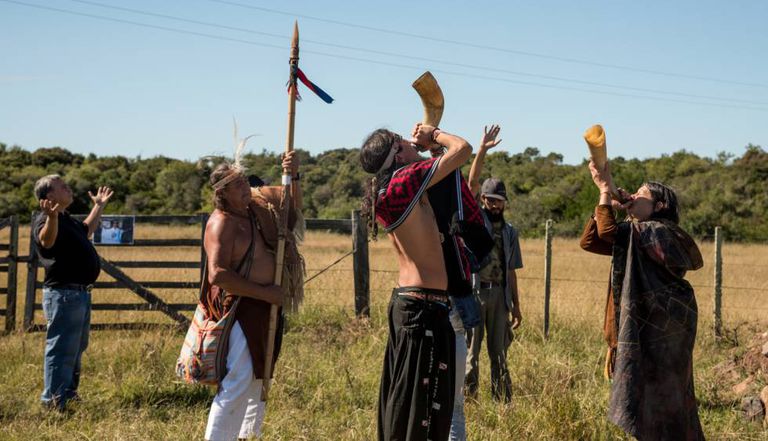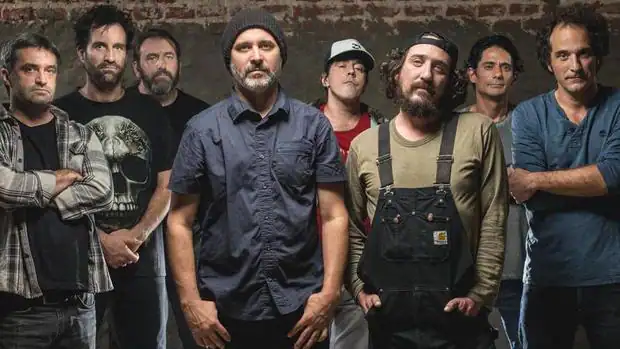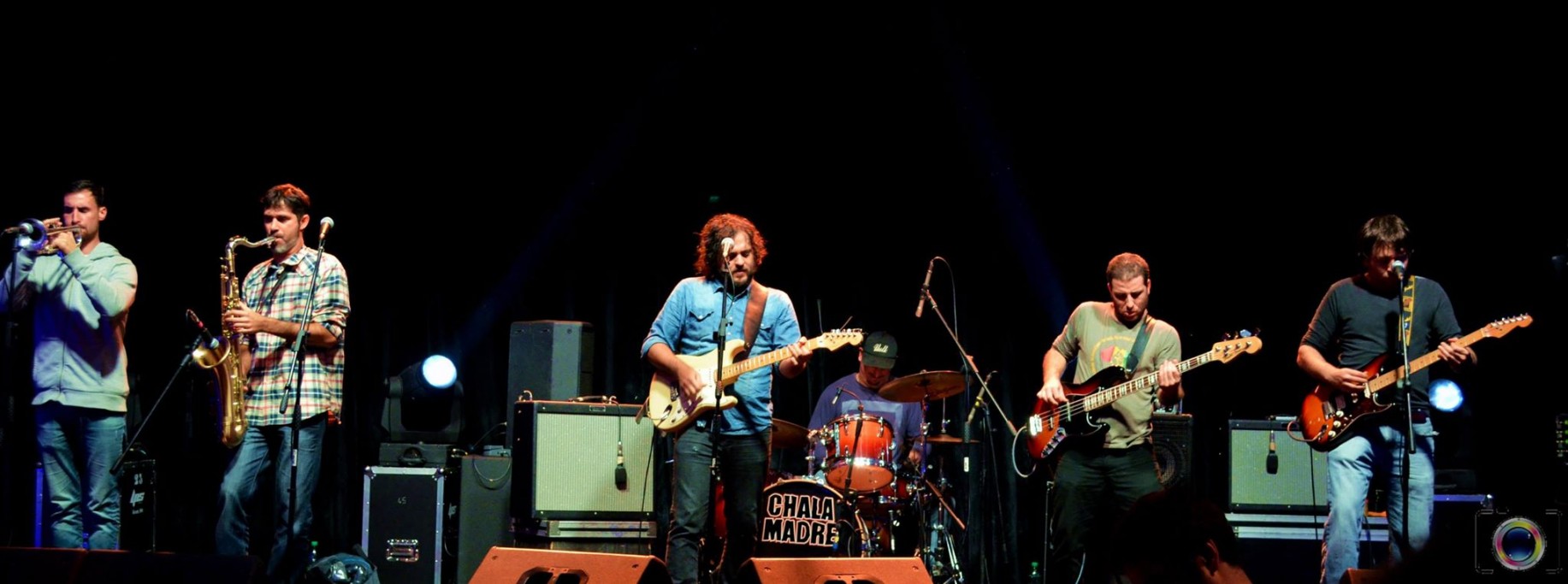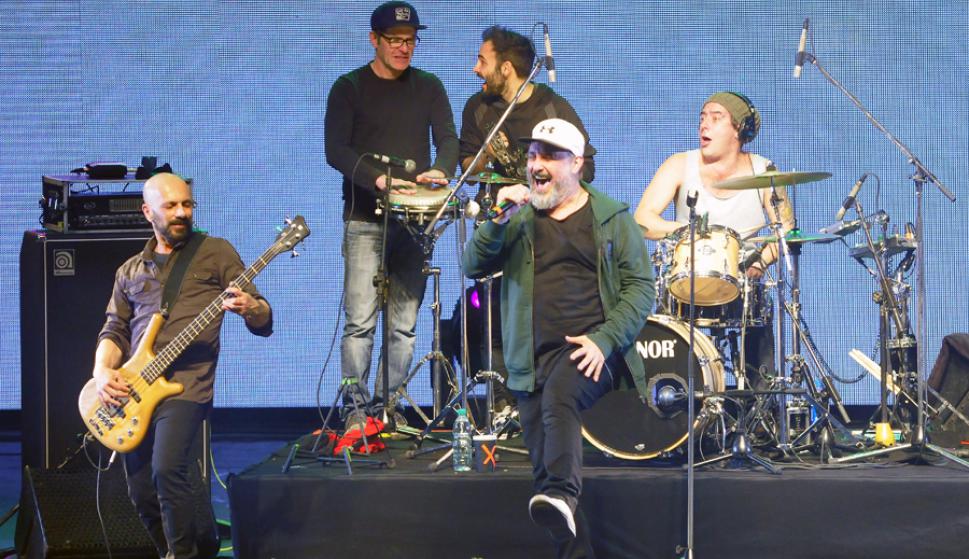The native Charrúa people utilized quite a few instruments, including wooden drums, woodwinds like hornpipes and flutes, and they also used natural items like seashells and horns as instruments. The Spanish and Portuguese brought along European instruments, like guitars but also utilized a variety of drums and other instruments as well as utilizing vocal harmonies.
 |
| Charrúa instruments |
Another musical form from the Rio de la Plata region is the candombe. This style has its roots in the music and dances the African slaves brought with them. The rhythms used in candombe are produced from drum ensembles called cuerdas, using drums of different sizes: tambor repique, tambor chico, and tambor piano; collectively called the tambores de candombe. Each of these drums are played with an open hand and a stick in the other hand, and at least one of each drum is required in an ensemble. Some of the famous candombe musicians include Rubén Rada and Hugo Fattoruso, who was part of several bands and well known in the Latin American music crowd.
 |
| Candombe |
Milonga is a type of music that developed in both Uruguay and Argentina and was really popular during the 1870s. Using a 2/4 time, it was used as dance music, complete with improvisation. And it eventually changed and developed into tango music. However, it didn’t go away; it still retains its dance style to it, but as a separate genre to tango.
 |
| Milonga |
Murga is also another type of folk music that is a type of musical theatre. Typically seen during Carnival celebrations, there is a group made of three percussionists (a small bass drum, a snare drum, and cymbals) and a chorus. The singing styles may not be something expected by some when described as musical theatre: it’s characterized by being loud and nasal in quality, and the most important parts of it are the opening and closing songs.
 |
| Murga |
Many of these styles mentioned earlier also have dances that are associated with them. And the main ones are tango, candombe, and milonga. Tango has long been known as a sultry dance and is listed on the UNESCO Intangible Cultural Heritage list. Milonga is truly part of the Uruguayan experience, with milonga clubs open every night of the week. Candombe is making a comeback and part of the heritage of the Africans who were brought to Uruguay. Lively dancing and rhythmic drumming makes for an exciting show.
.jpg) |
| Los Shakers even looks like a certain British foursome of the 1960s. |
 |
| La Vela Puerca |
For some newer rock, I found the band La Vela Puerca, which has kind of a 1990s rock/ska feel to it. This reminds me of something that I would’ve listened to in high school. Well hell, I’d blast this now. I love it! I’m a huge fan of 1990s music anyway. Another band that falls in this category of rock/ska style is a band called El Cuarteto de Nos. I really liked what I heard. They do tend to mix it up a bit with their style, mixing some with the rock-rap style too. They sometimes remind me of Twenty-One Pilots in their styling.
 |
| No Te Va Gustar |
Transitioning to bands in the early 2000s, I listened to some songs from the band No Te Va Gustar (which means “you won’t like it,” haha). At times, they remind me of the Brazilian band Skank. They are a pretty solid rock band, but they can also pull off the ballad as well. Another rock band I sampled through was Trotsky Vengarán. They were kind of fun to listen to with their upbeat songs. I would also put Hereford in this category. They are a little more melodic and strictly rock. The band Abuela Coca is interesting: like, it’s rock, but it has a unique sound to them. They apparently were highly influenced by the Spanish musician Manu Chao and his earlier band Mano Negra.
 |
| Reytoro |
I did find a couple bands that are a little harder rock. I listened to the band Buitres’ album Despues de la Una/La Bruja. I thought it was good solid rock, although they draw a lot on the styles of the 1960s, roadhouse blues, and other styles. I actually really liked this one. One band that tends to be slightly on the harder side is Once Tiros. They kind of swing from regular rock to punk and even a 1980s rock sound at times. So, I give them credit for trying different styles and pulling it off. One band that is definitely metal is Reytoro. I was very impressed with them and their technical playing styles. I will definitely be playing more of this in the near future.
 |
| Chala Madre |
I even found a reggae band called Chala Madre. I’m a fan of reggae, and they really do a good job at this. I feel like this modern rock-style of reggae is generally undervalued, and I wish there were more bands like this.
 |
| El Peyote Asesino |
One band I listened to that I enjoyed was Peyote Asesino. They are kind of a rock-rap band, but more like in the style of Cypress Hill, if Cypress Hill had more hard rock behind it (at times, at least). Like, I really, really like this style, and I always have. I wish it were more of a thing, so I’m happy that I came across these guys.
Up next: the food

No comments:
Post a Comment